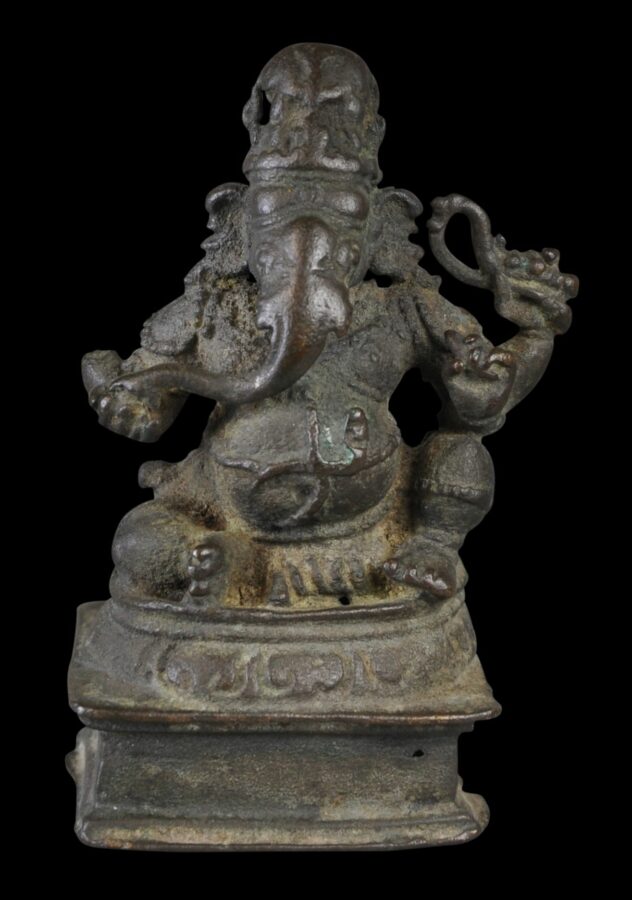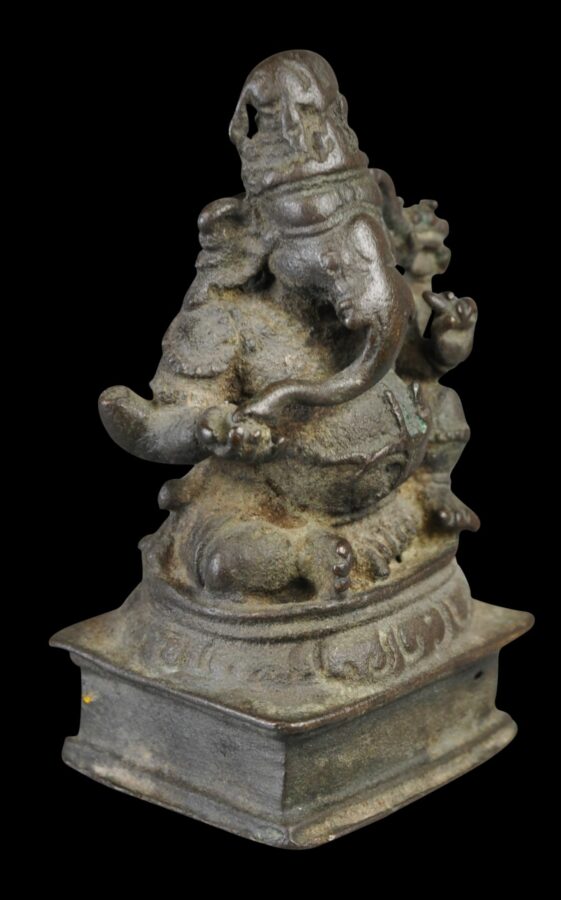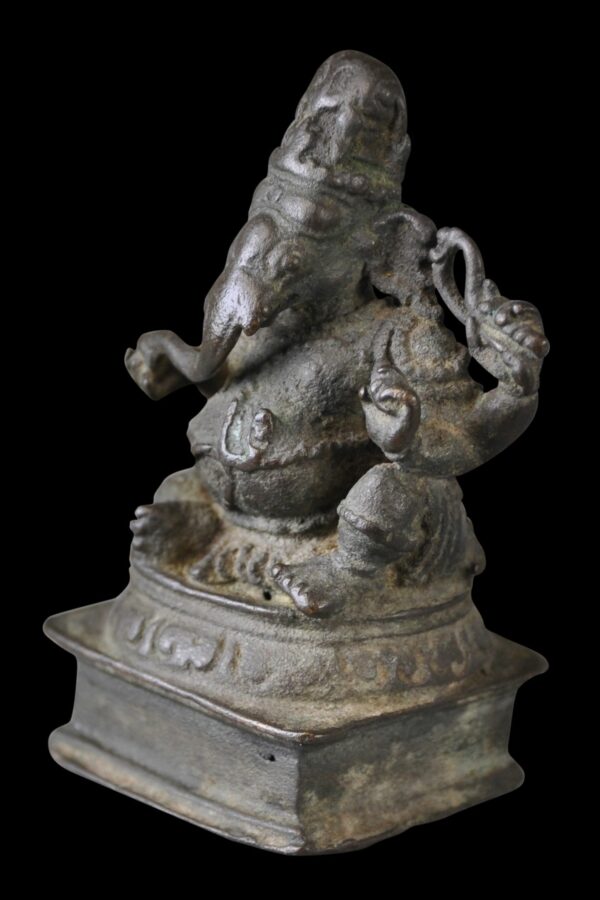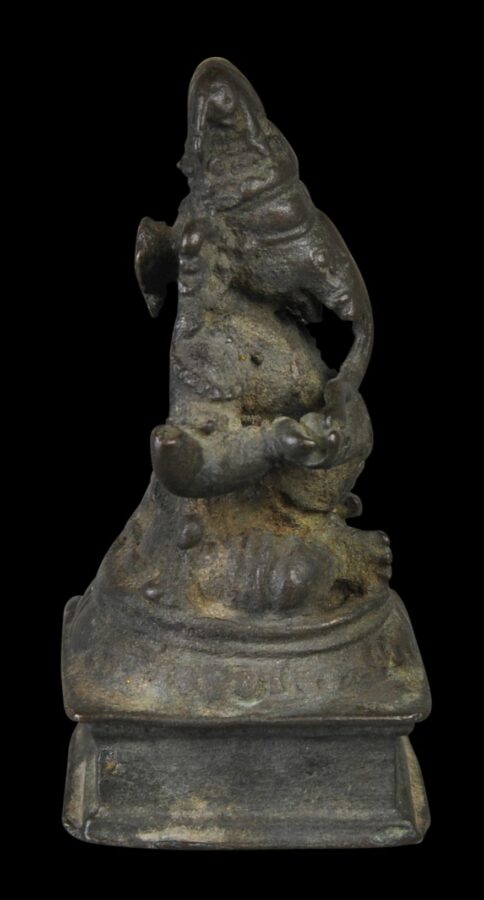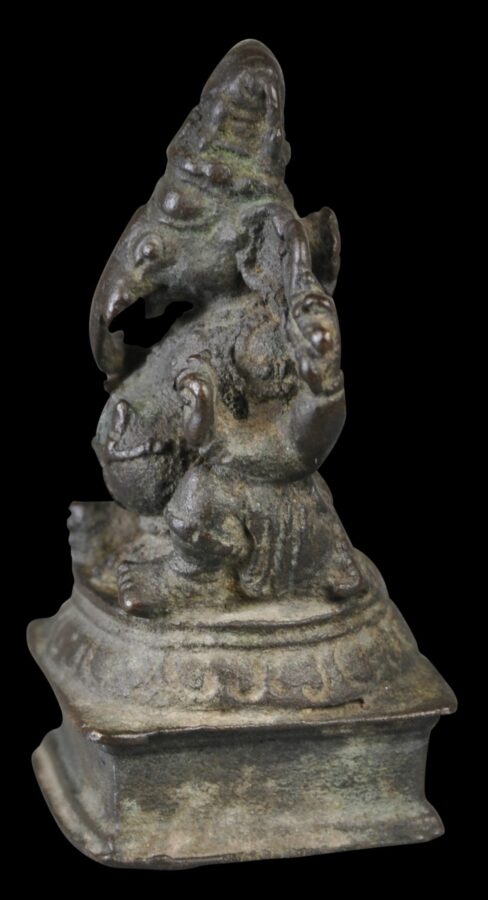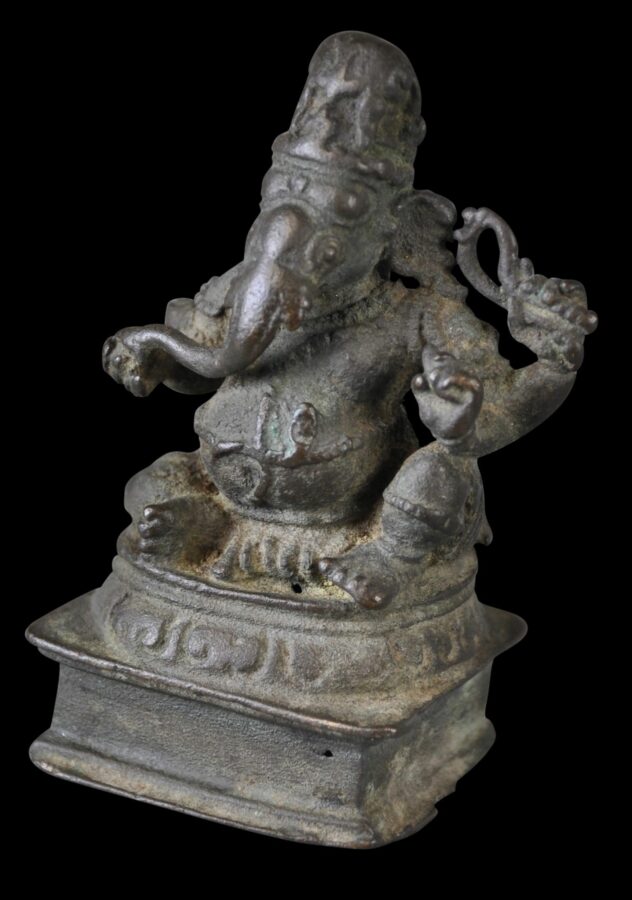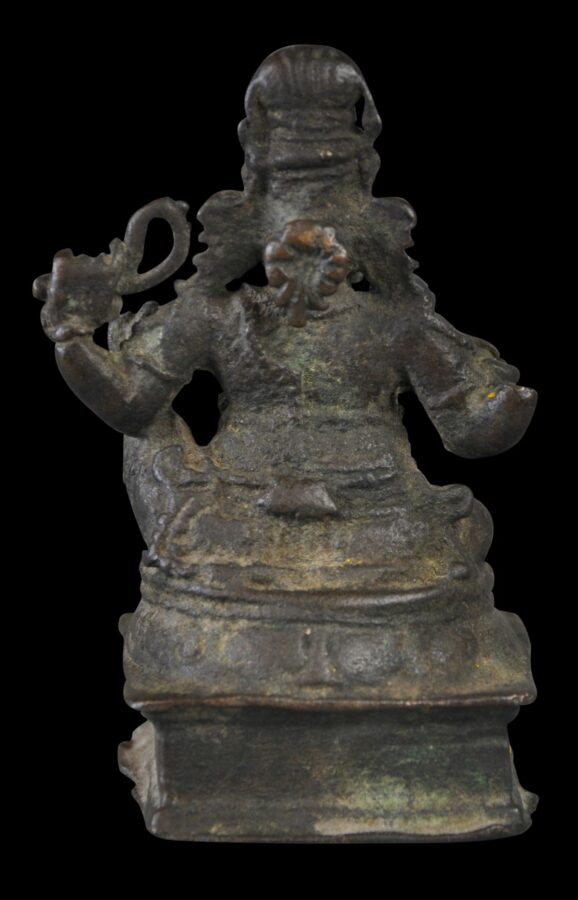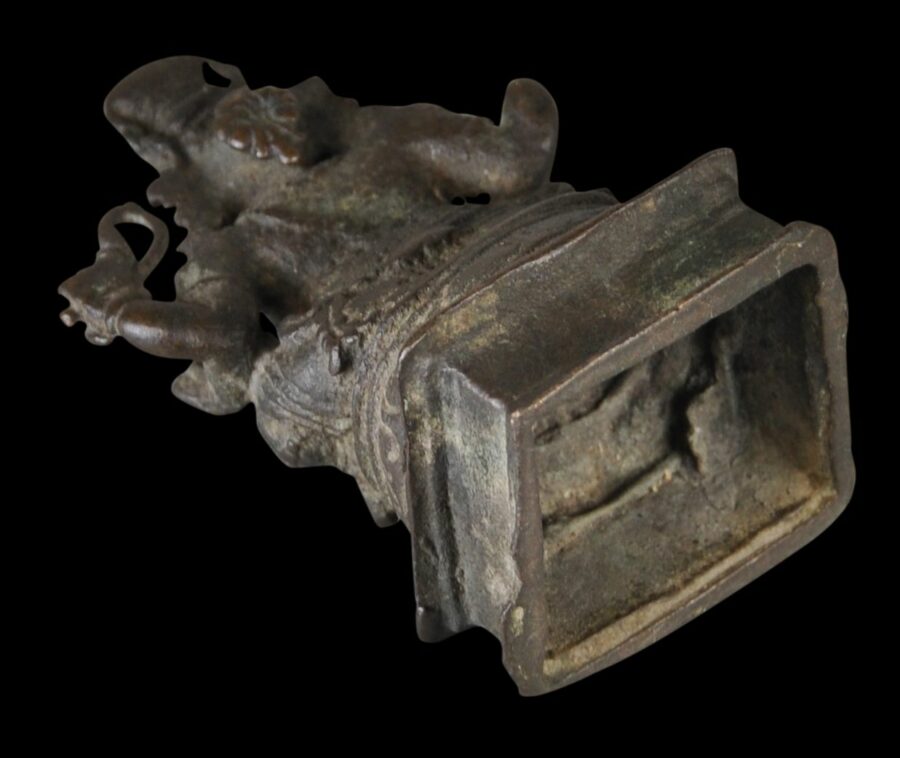This fine miniature bronze Ganesh dates to the 9th-10th century – to the early Chola Dynasty.
It shows the elephant-headed deity, known as ‘the remover of obstacles’, seated in the rajalila asana posture, on a lotus petal dais, with a prominent pot belly and four arms (one upper arm is largely deficient – an early loss). The remaining upper arm holds a noose (pasha), one of the deity’s attributes. The lower left hand is in a gesture of greeting, and the other holds a modaka sweet to the deity’s long, thin trunk, which curls to the deity’s right.
Other features include broad, beautifully-shaped ears, a forehead bump, and jewellery.
Ganesh wears a rounded crown in keeping with early Chola bronzes, and a round flower-like siras-cakra protuberance emerges from the rear of the head from which a ribbon is emitted.
The image has a deeply encrusted, incontrovertible patina. Miniature examples of Ganesh images that are this early are quite rare.
References
Bromberg, A., et al., The Arts of India, Southeast Asia, and the Himalayas: At the Dallas Museum of Art, Yale University Press, 2013.
Dehejia, V., The Sensuous and the Sacred: Chola Bronzes from South India, American Federation of Arts/Mapin, 2003.
Guy, J., et al., Chola: Sacred Bronzes of Southern India, Royal Academy of Arts, 2007.
Nagaswamy, R., Timeless Delight: South Indian Bronzes in the Collection of the Sarabhai Foundation, Sarabhai Foundation, 2006.
Pal, P., Art from the Indian Subcontinent: Asian Art at the Norton Simon Museum, Yale University Press, 2003.
Sivaramamurti, C., South Indian Bronzes, Lalit Kala Akademi, 1963.
Srinivasan, P.R., Bronzes of South India, Government Museums Madras, 1994.


